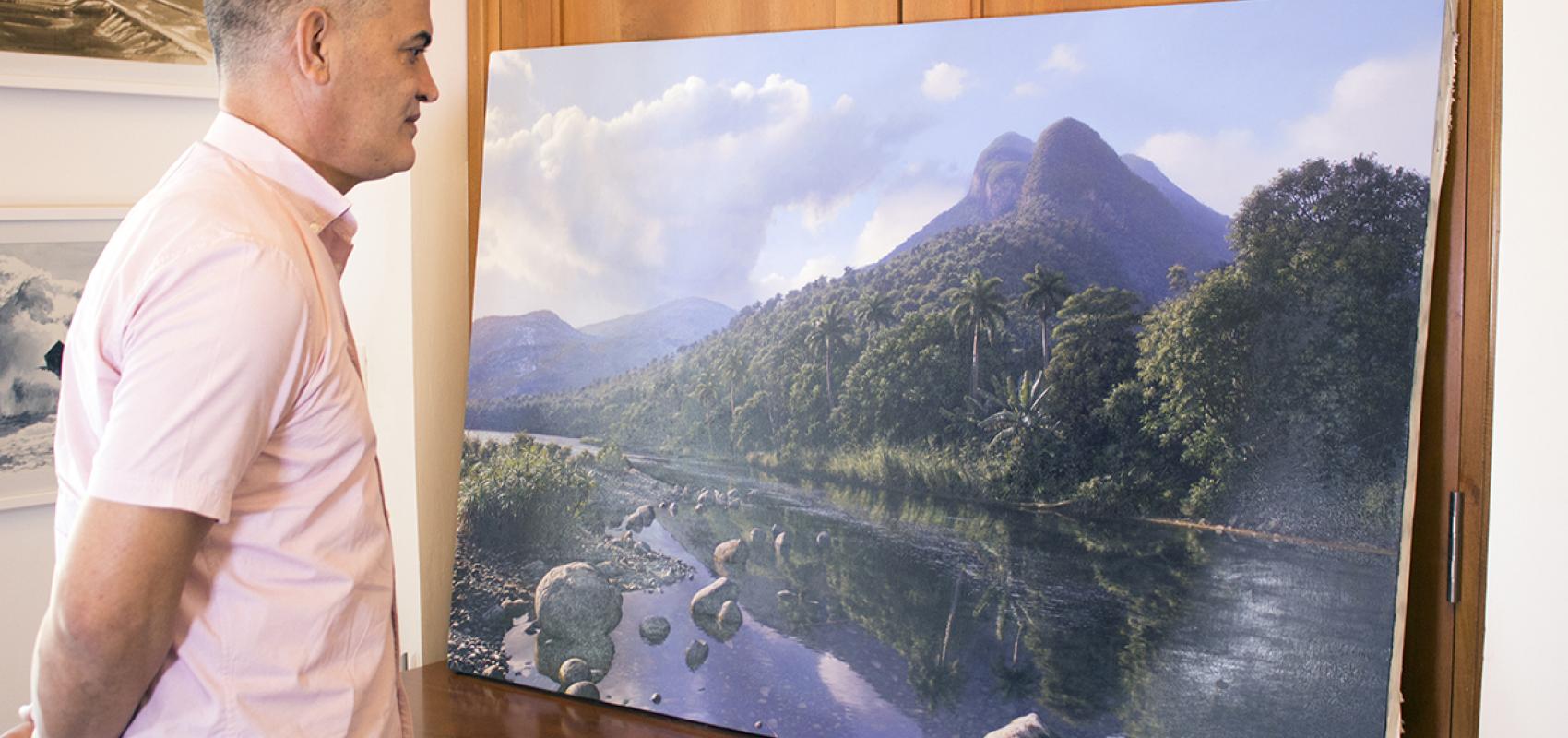As a painter, Ernesto Estévez is a spiritual being, someone who searches for the ideal landscape within himself and, although he knows that it may not exist, he never gives up on pursuing the discovery or the scenery that will make him happy through painting.
An artist with previous training as a speleologist and photographer of natural environments has a high probability of being a dreamer, an inveterate adventurer. His eyes have seen what thousands of men would never imagine to have in front of them and those experiences have been fundamental to not give up in complex moments, when he has not yet achieved an exquisite and exotic work as the one he has presented for years.
Why the landscape to express yourself?
Certain circumstances in life condition us in our way of thinking and feeling. In my life it was like that too. Since I was very young I got involved with photography, with nature, I belonged to a speleology group and we were constantly visiting the countryside and taking pictures in the caves.
I dedicated many years to this task, in which I also developed as a photographer and, let's say, ecologist. This was perhaps conditioning my vocation, because painting came later as something almost spontaneous.
As I stopped going to this speleological activity for my own work (I was a photographer), I began to look for that refuge in painting and to express the need I had to be in natural environments was my work.
How do you manage to get so attached to the reality of the landscape?
Actually, there are not many mysteries in that, the artist's technique is a process of maturation of years. The first works I did in oil were practically caricatures, and with time you get better and better, you learn from other artists who know. I work with several layers of paint as a base, I try to preserve the white colors so that they remain bright later in the scene. I start from the primary colors, I don't have a very wide palette of other colors, I start from blue, red, yellow, white and from there I create all the mixtures and achieve the dark, deep colors. I look for ultramarine blue, cobalt blue, Prussian blue to achieve very dark shades.
I also work with glazes on the works, sometimes on the skies themselves, I give them layers of glaze, with layers of varnish. For example, this type of work (referring to the background landscape in the interview) sometimes takes almost three, four months of work. They are not works that can be done in a short time because of the amount of processes involved.
Who are Ernesto Estévez's references in the landscape?
Imagine, Tomas Sanchez, Valentin San Carta also influenced me a lot, as well as Domingo Ramos and other artists such as Raymundo Lopez, whom I met in that environment of speleology, of nature. He was already painting landscapes when I met him. He was my first reference, I liked his work very much and I learned from him.
How complex is it to perfect the technique for a self-taught painter?
In the case of being self-taught you spend twice as much work, because the knowledge really comes after trial and error, so maybe you have to invest much more time. Although I had friends who could guide me in those first steps, reaching this level of realism and detail was a career that I really undertook alone.
Trying to make my work a little more complex every day, in terms of technique, to go much deeper. It took me quite a long time, it demands a lot of attention, to be focused on what you are doing, to dedicate many hours of study, of work. Basically it was that.
It was hard work, although you enjoy it. In each work you feel that you learn, that each work is a school and every time you finish you feel the satisfaction of having learned something new in painting.
How are Ernesto Estévez's creative rhythms?
I am now a little undisciplined with the pandemic, because I lost my work rhythms. I had my studio in Santa Catalina a month before this issue started, I had a rent there and I had to abandon the rent. Now with the pandemic I am with the children at home, I have lost a little bit the discipline and the constancy of a strict schedule. In the studio I used to start at 8:00 a.m. until 6:00 p.m. or so.
What pictorial obsessions have accompanied you over the years?
I think every artist must have that obsession, mine is in the evolution as an artist. In the case of my work, although they may seem realistic, for example, this work that I have behind me, the landscape does not exist, just as you see it.
One looks for the ideal landscape within oneself, do you understand? It is the feeling of an explorer. I imagine that the explorers felt the same way when they arrived in the Americas, they were amazed by such an exotic world, looking for places never seen, never recognized.
Perhaps the same thing happens to me, it is a continuous exploration within my being looking for the ideal landscape, perfect, that we know does not exist, it can only be in our spirit, soul, as a desire to search innate in every human being.
Published 9/08/2021





